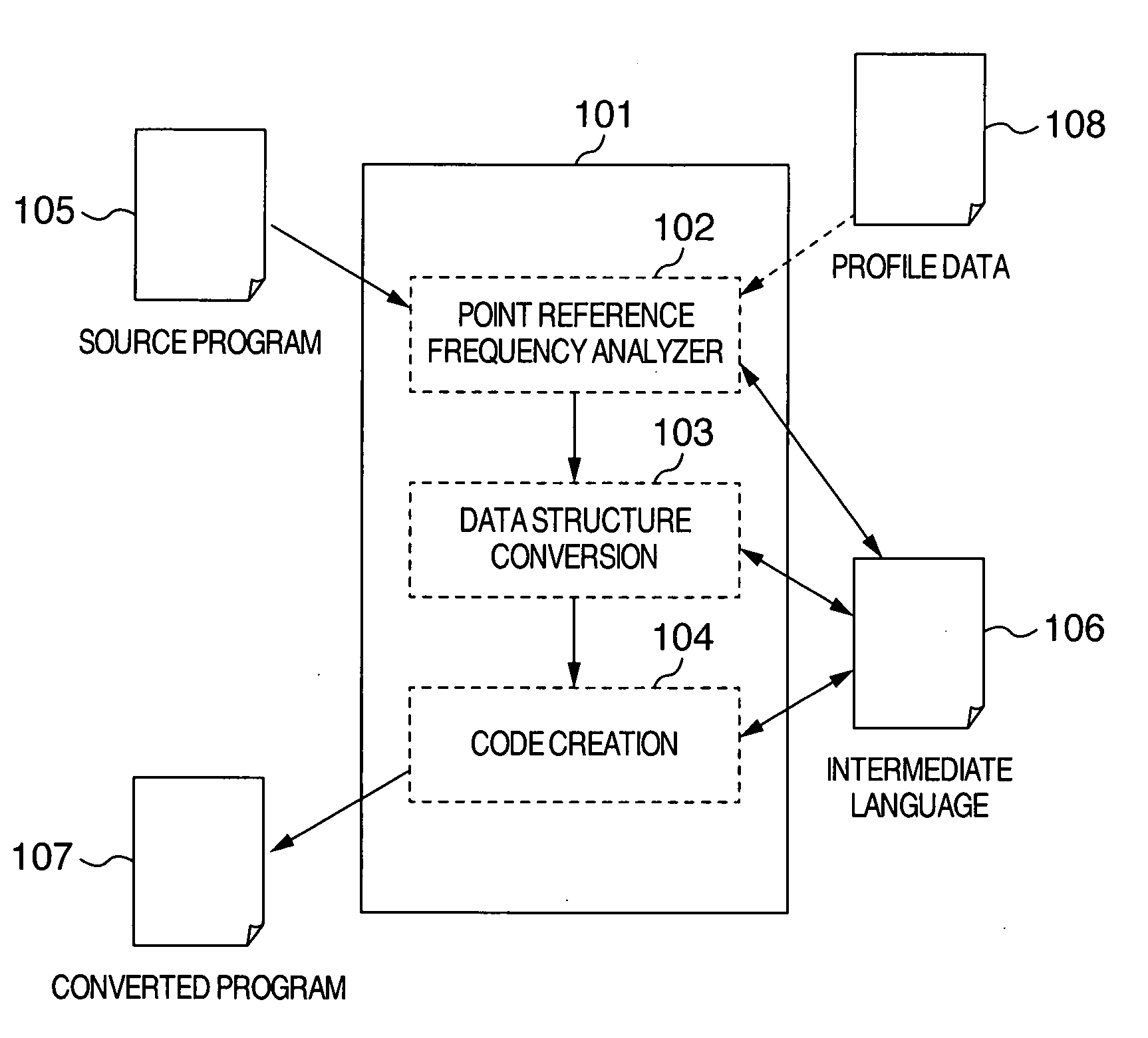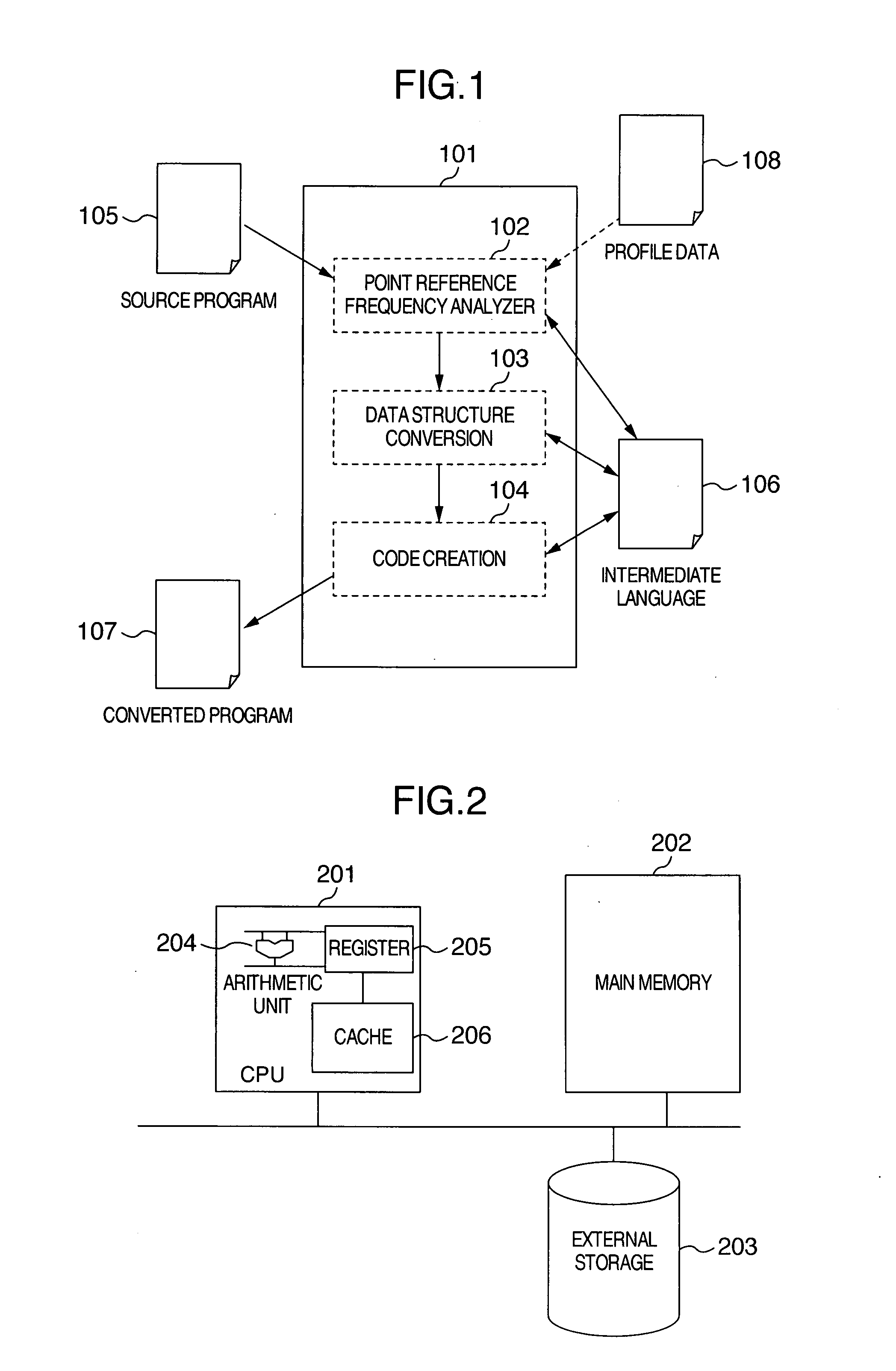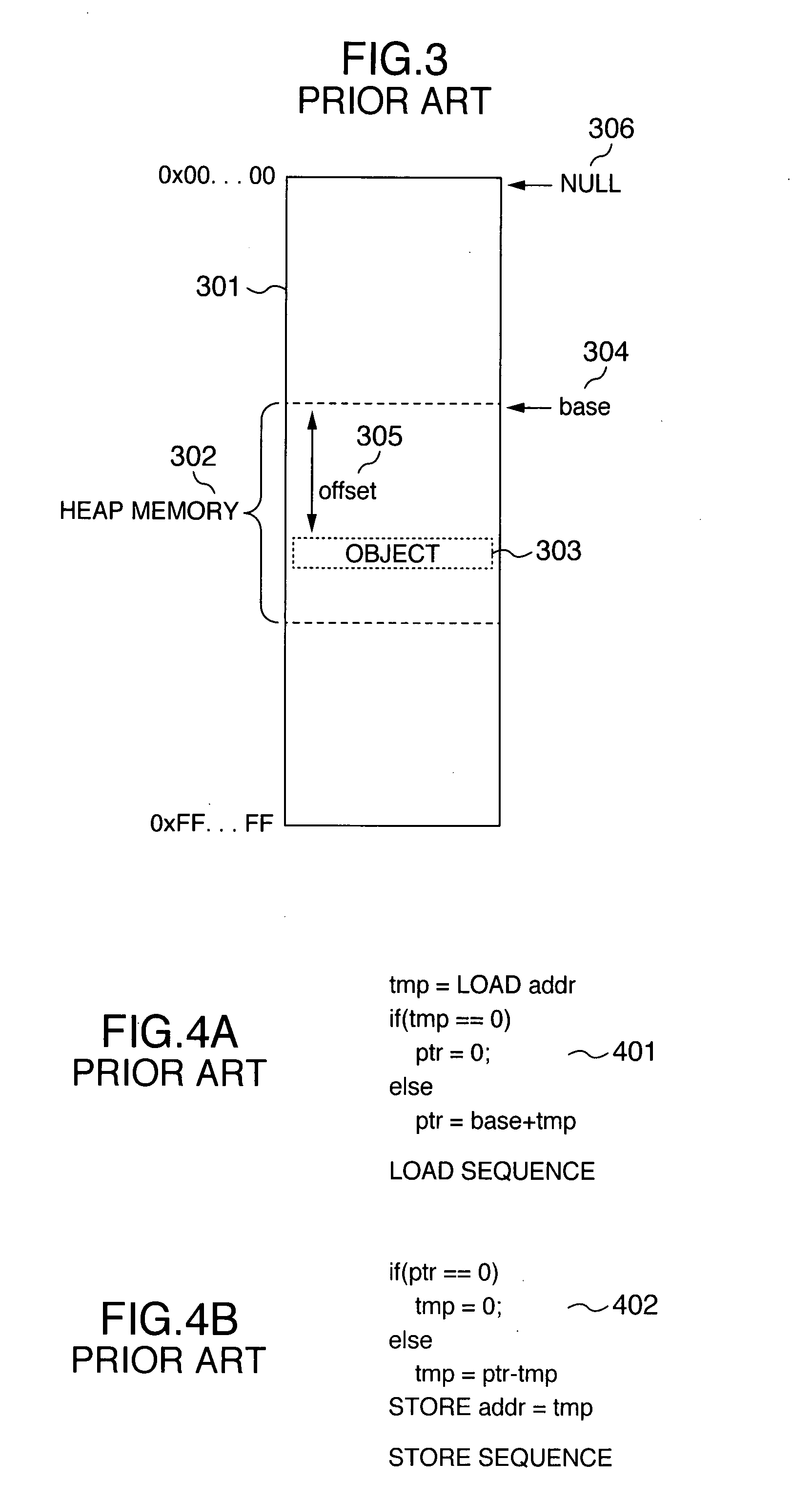Pointer compression/expansion method, a program to execute the method and a computer system using the program
a pointer and data structure technology, applied in the field of pointer compression/expansion methods, can solve problems such as performance degradation, and achieve the effects of improving the cache hit rate and performance of the computer system, and reducing or suppressing the overhead required for conversion
- Summary
- Abstract
- Description
- Claims
- Application Information
AI Technical Summary
Benefits of technology
Problems solved by technology
Method used
Image
Examples
first embodiment
[0046]FIG. 2 shows an outline of the configuration of a computer system to which the present invention is applied.
[0047] Programs and data of a language processing system to which the present invention is applied are stored in an external storage 203. The language processing system is executed by a Central Processing Unit (CPU) 201 as follows. The CPU reads a program of the system from the storage 203 to load the program in a main memory 202 and then executes the program in the memory.
[0048] To access the memory 202 at a high speed, the CPU 201 includes a small-sized and high-speed cache memory 206. To execute calculation processing, the CPU 201 loads data in a register 205 and conducts an arithmetic operation for the data by use of an arithmetic unit 204. To load data in the register 205, the CPU 201 makes a check to determine whether or not the data exists in the cache memory 206. If the data exists therein, the CPU 201 uses the data. Otherwise, the CPU 201 reads the data from t...
second embodiment
[0068] The prediction processing of the first embodiment to predict the field reference frequency in the program by use of the profile data 108 (FIG. 1) may also be achieved through a program analysis without using the profile data 108. The flowchart of FIG. 11 shows an embodiment of processing to implement the pointer reference frequency analyzer 102 of FIG. 1 by using a program analysis.
[0069] The processing starts in judge step 1101. In step 1102, a set of loops in the program is represented as variable L. In judge step 1103, a check is made to determine whether or not variable L is an empty set. If variable L is an empty set, there does not exist a loop to be processed, and hence control goes to step 1107 to terminate the processing. If variable L is other than an empty set, control goes to step 1104 in which one element is obtained from the loop set L and is represented as variable l. A predicted loop length of variable l is represented as variable n, and a set of field refere...
third embodiment
[0073] When an object of the mixed format including the pointers 704 and 705 of the compressed format and the pointers 702 and 703 of the uncompressed format is used, there occurs a situation in which whether or not a field under consideration is compressed cannot be statically determined. For example, in most Java implementations, a program is executed by use of an interpreter or a code generated by a dynamic compiler. In the code generating operation, the compiler can establish a one-to-one correspondence between the format of a field and a code which refers to the field. It is hence possible to statically determine the format of the pointer.
[0074] On the other hand, in the interpreter, it is required for one code to control operations to refer to a plurality of fields. It is hence necessary to dynamically determine the field format, which will be described later.
[0075]FIG. 12 shows data structure employed when the format of compression is determined for the pointer according to...
PUM
 Login to View More
Login to View More Abstract
Description
Claims
Application Information
 Login to View More
Login to View More - R&D
- Intellectual Property
- Life Sciences
- Materials
- Tech Scout
- Unparalleled Data Quality
- Higher Quality Content
- 60% Fewer Hallucinations
Browse by: Latest US Patents, China's latest patents, Technical Efficacy Thesaurus, Application Domain, Technology Topic, Popular Technical Reports.
© 2025 PatSnap. All rights reserved.Legal|Privacy policy|Modern Slavery Act Transparency Statement|Sitemap|About US| Contact US: help@patsnap.com



